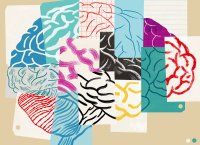Simple Ways to Integrate Four Evidence-Based Teaching Strategies
Jennifer Gonzalez talks with a researcher and a teacher to tackle the science—and the logistics—behind teaching strategies like spaced practice and interleaving.
When educators understand the science behind teaching practices they can more readily incorporate them into their daily instruction, says Cult of Pedagogy’s Jennifer Gonzalez. In her podcast and accompanying post, Gonzalez highlights the four key teaching strategies researcher that Pooja Agarwal and K–12 teacher Patrice Bain feature in their new book, Powerful Teaching: Unleash the Science of Learning. They explain the science behind the suggestions, many of which are familiar, as well as best practices and applications for each one.
Retrieval practice: The goal is for students to recall information from memory and reinforce learning through quick daily assessments. Evidence shows that actively accessing learned material—rather than merely reteaching it—boosts retention.
Bain decided that daily mini-quizzes were a better way than her regular homework assignments to engage students in retrieval practice. “So many students have absolutely mastered homework,” Bain says. “They look at a question, they look up the answer, they write it down and repeat. They get good grades, but they can’t retrieve the information; it’s difficult to discuss the next day, a week later.” The quick quiz assessments kept her finger on the pulse of what her students knew and where the gaps existed. The change not only increased students’ ability to retain information but saved Bain time from grading stacks of homework.
Spaced practice: Spaced practice is the simple strategy of returning to learned material repeatedly over time. “You could call these throwback Thursdays or throwback Tuesdays or you just simply ask students, hey, what did we do last week?” says Agarwal, suggesting a variety of ways to frame the strategy for students.
Retrieval isn’t just about things that have been covered recently. It’s also important that teachers are “asking students to retrieve information a few days, weeks, or even months after they learned it,” Gonzalez writes. “Because that information is harder to recall, it actually makes the learning that comes from it that much more durable.” Half the battle is simply being intentional about the approach: Teachers can easily implement the practice by separating material into digestible bites and scheduling spaced instruction throughout the coming weeks and months.
Interleaving: Students learn better when they can’t easily predict the answer to the next question. Interleaving is the practice of throwing curve balls, mixing up your lessons in ways that resist easy pattern recognition—and forcing students to adapt on the fly. Agarwal offers an example where students are learning to multiply and divide fractions: Presenting questions so that some are multiplication and some are division requires students to stop and think about which strategy to use.
Those moments of thoughtful reflection enhance learning, Agarwal says. Teachers can use the practice in any classroom by intentionally and regularly shifting between the types of material and topics they cover.
Feedback-driven metacognition: In this quick practice, students assess what they already know so they can focus their studying on what they have not yet learned. Bain uses her mini-quizzes for this strategy: once the quiz is over, she goes over the answers so students can immediately see where their strengths and weaknesses lie.
When she returns the graded quizzes the next day, she asks the students the same questions again—requiring them to recall and explain the answers and address their learning gaps. Sometimes Bain pairs students to discuss previous lessons referenced by the quiz to reinforce the learning.
None of the strategies are difficult or time-consuming—and many are already employed by teachers, Gonzalez writes. Understanding how they function in the classroom enhances the ability to use them more frequently and in a more integrated way.
